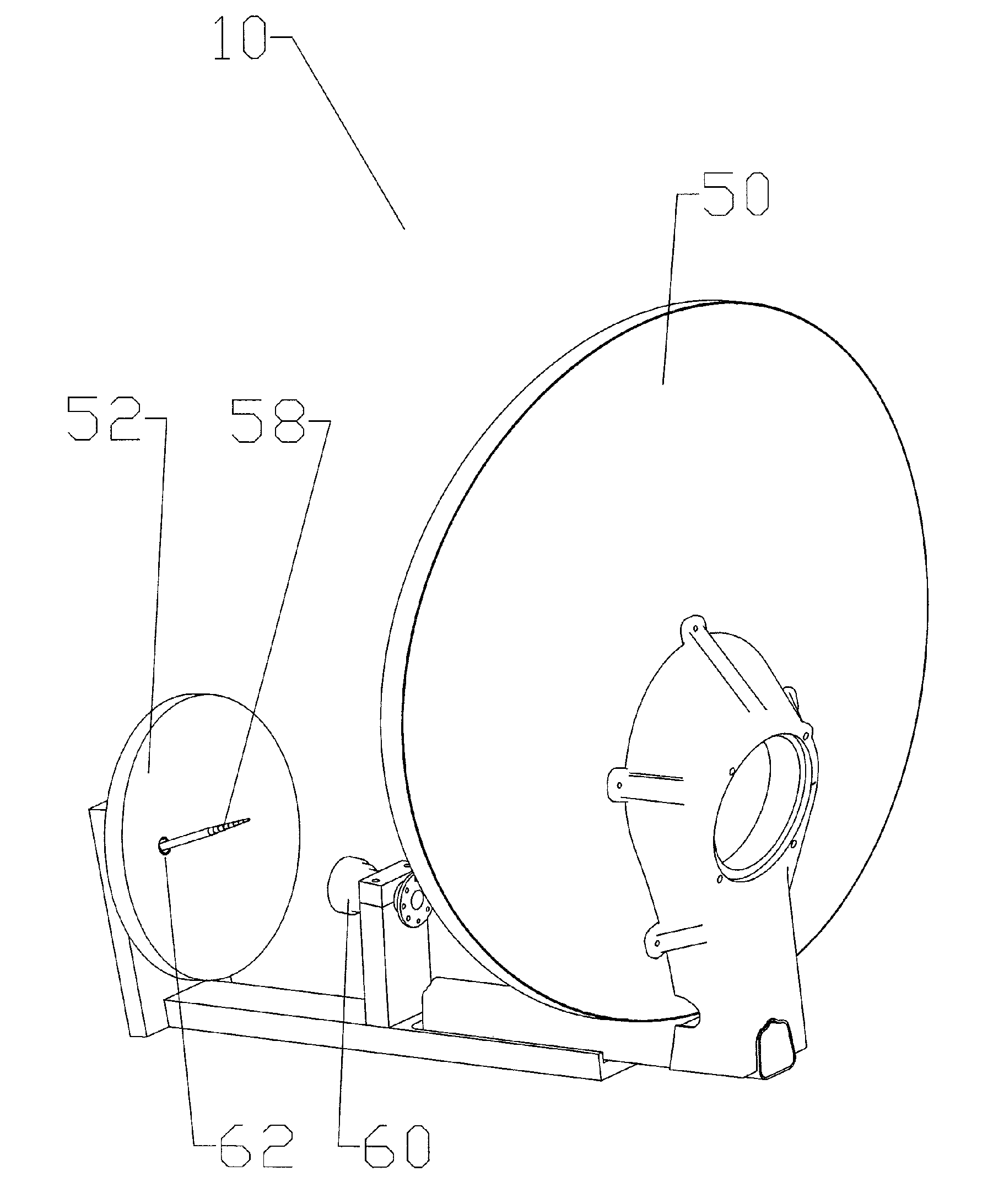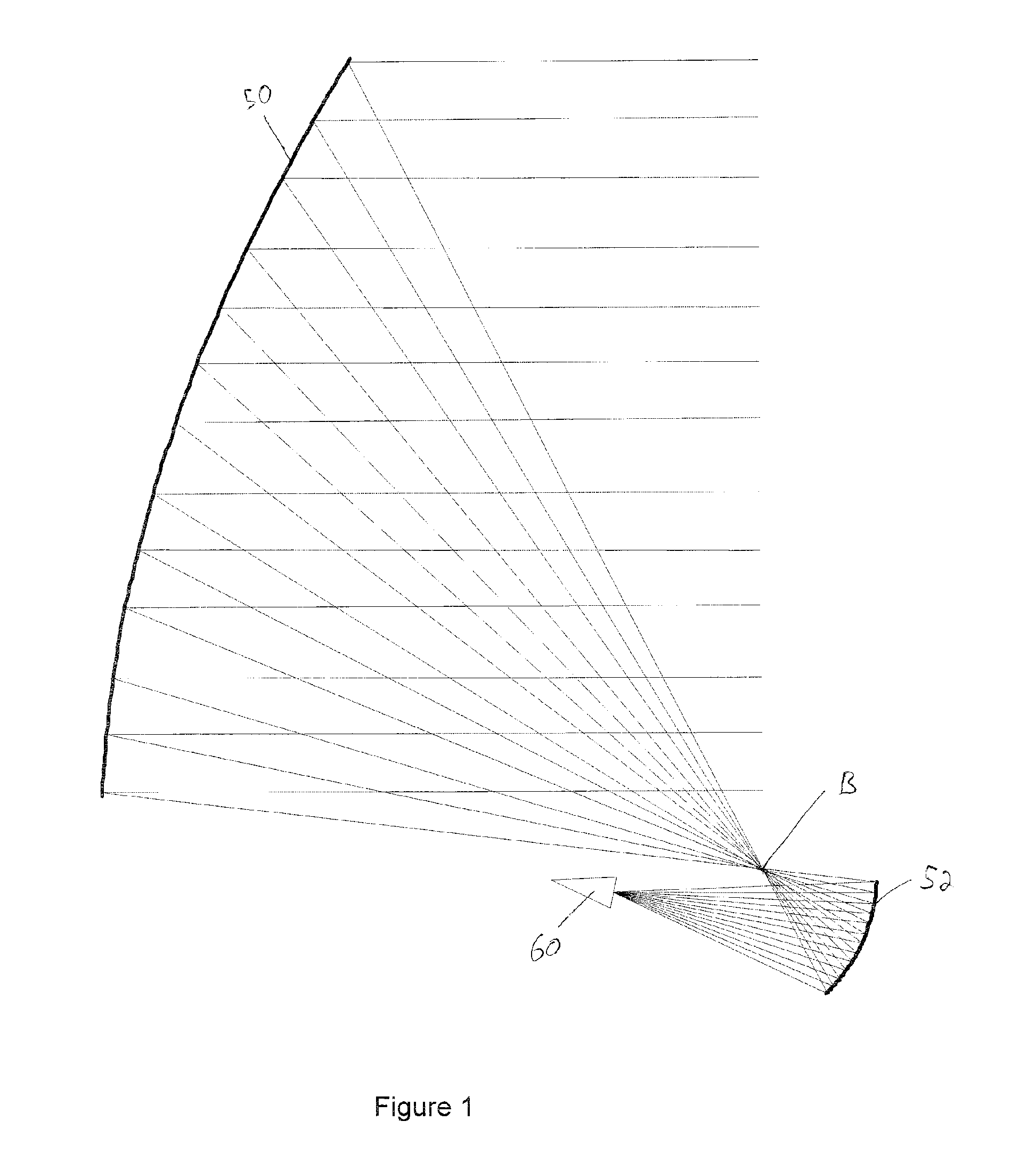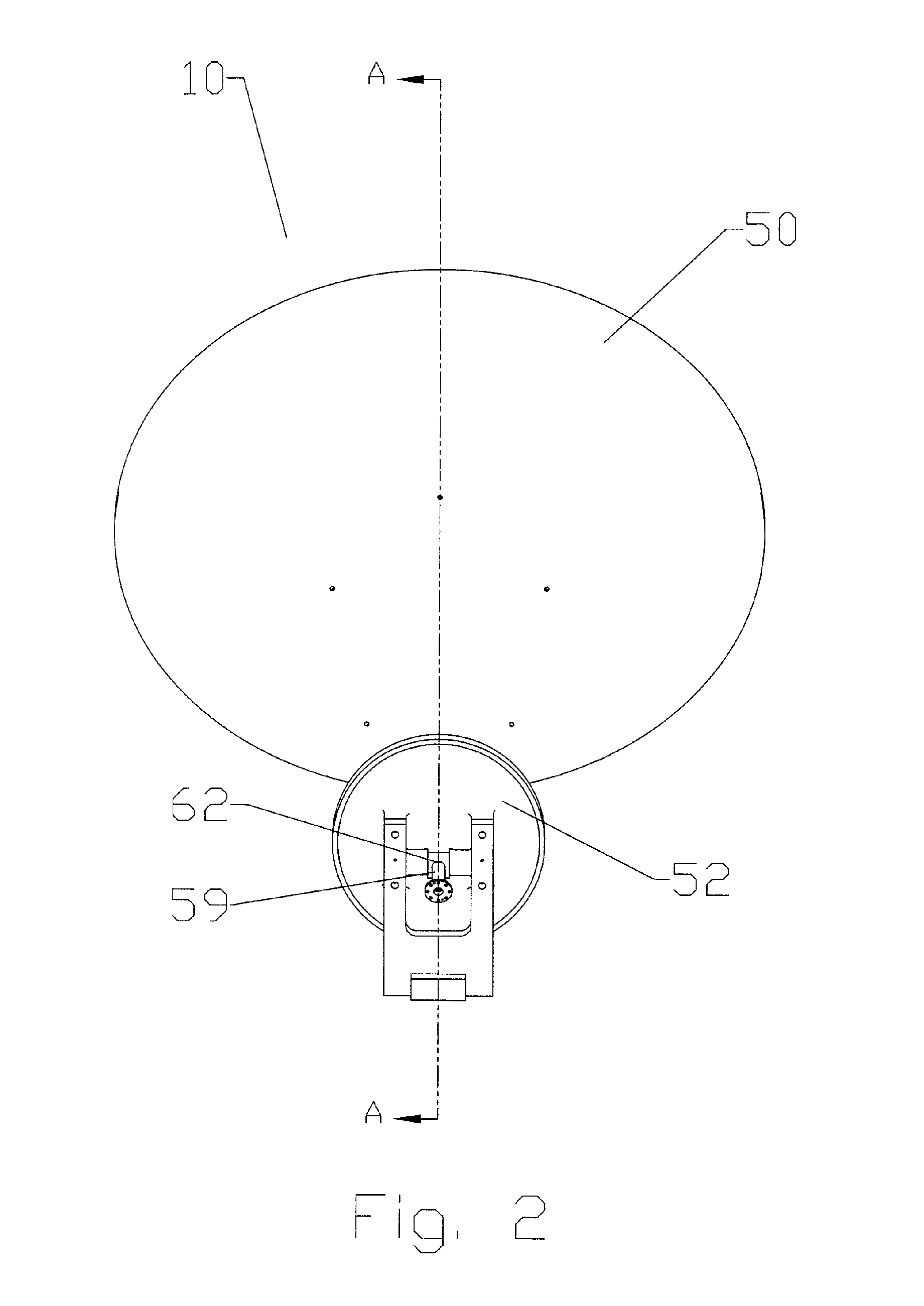Co-Located Multi-Band Antenna
- Summary
- Abstract
- Description
- Claims
- Application Information
AI Technical Summary
Benefits of technology
Problems solved by technology
Method used
Image
Examples
Embodiment Construction
[0034] In a conventional, non-shaped Gregorian system, as shown for example in FIG. 1, the main reflector 50 is a section of a paraboloidal surface and the sub reflector 52 is a section of an ellipsoidal surface. Ray-optic analysis shows rays launched by the first feed 60 strike the sub reflector 52 to be reflected so as to pass through a single point, the focal point of the main reflector, before striking the main reflector 50 and reflecting again to form the main beam. The first feed 60 is ideally positioned at one focus of the ellipsoid-section sub reflector 52, with the sub reflector 52 positioned so that the other focus of the ellipsoid is coincident with the focal point of the main reflector 50. By stating that the main reflector 50, sub reflector 52, and first feed 60 collectively form an antenna 10 system with Gregorian optics, it is understood by those skilled in the art that these components are arranged so that the focal point or focal region of the main reflector 50 is l...
PUM
 Login to view more
Login to view more Abstract
Description
Claims
Application Information
 Login to view more
Login to view more - R&D Engineer
- R&D Manager
- IP Professional
- Industry Leading Data Capabilities
- Powerful AI technology
- Patent DNA Extraction
Browse by: Latest US Patents, China's latest patents, Technical Efficacy Thesaurus, Application Domain, Technology Topic.
© 2024 PatSnap. All rights reserved.Legal|Privacy policy|Modern Slavery Act Transparency Statement|Sitemap



